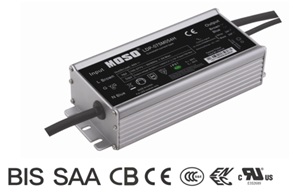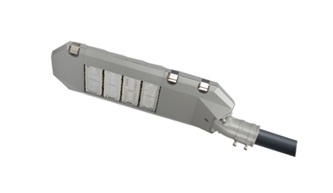Human lighting technology has evolved over the first 135 years since the invention of the first light bulb. The types of light sources have also evolved from incandescent lamps, fluorescent lamps, and gas discharge lamps to a new generation of LED illumination sources. There are three important indicators for the development of lighting technology. The first is light efficiency, the second is life, and the third is color rendering. For the first two indicators, as the development of lighting technology continues to improve, but the third indicator color rendering index has not increased with the development of lighting calculations, the main reason is the limited and color rendering index. Theoretical definition. The International Commission on Illumination CIE defines color rendering (color) as [9]: "A conscious and unconscious effect of a light source on the color appearance of an object compared to a standard reference source." The lighting industry currently has only one widely accepted method for evaluating color rendering, the color rendering index CRI (color rendering index), which was proposed in 1960 by some scientists working with light source manufacturers. CRI is based on the "test sample color shift method", comparing the color difference of the sample color under the reference illuminant and the test light source to evaluate the color rendering of the light source, that is, the color "authenticity" or "naturalness" [1]. The "standard reference light source" in the color rendering index is a spectrum of black body radiation below 5000 K, and the spectrum of average daylight above 5000 K. The illumination mechanism of incandescent lamps belongs to blackbody radiation. It is obvious that the color rendering or color rendering index of incandescent lamps is the highest regardless of the development of illumination technology. Other advanced illumination technologies only have their spectral morphology deviated from the spectrum of the reference source. The color index will drop. PJBoum described several reasons why daylight was the ideal source of illumination in 1947: "The color of the object (1) is very rich in color under daylight, (2) the nuances of color can be easily distinguished, and (3) ) Make the colors of the objects around us look very natural" [2]. In Bouma's description, we can know that in addition to the concept of CR, there are other concepts that describe the "color quality" of the light source [3], such as clear colors and rich colors. This paper investigates the research status of color clear indicators of illumination sources at home and abroad, and draws on relevant research methods to conduct visual ergonomic experiments, and qualitatively analyzes the relationship between color rendering index and color temperature and color clarity. The experimental results show that the high color temperature white LED lighting products have higher color resolution than the low color temperature and the subjective perception color is more clear, and the color rendering index has little correlation with color definition, so it can not be evaluated by the color rendering index. The color definition of the LED illumination source. I. Research status at home and abroad The color can be divided into two aspects, the first is the influence of the illumination source on the viewer's ability to distinguish the color, and the second is the subjective feeling of the illumination source for the observer to have a clear color in the overall light environment. Many researchers at home and abroad have done a lot of research work on the color resolution of LED illumination sources. French researcher Elodie Mahler [4] et al. studied the color resolution of white light sources composed of monochromatic LEDs. The test sources they chose were RGB (red, green, blue LED), RGBA (A is amber), WR (two cool white phosphor LEDs and red LED), WWARGB (two cool white, two warm white fluorescent) Powder LED and amber, red, green and blue LED combination), the color temperature is maintained at 4000±40K, the illumination is 660±9 lux, and the tungsten halogen lamp plus filter is selected as the reference light source. They used homemade C32 color chess as a tool for sorting experiments. The results show that the RGB type has the worst color resolution, and the WR and WWARGB have better color resolution than the reference source. MarkS.Rea [5,6] in the United States recommended the use of CRI as a natural color evaluation index, GAI as a colorful evaluation index, and FSCI as a color-resolved evaluation index, for which they conducted many related visual experiments. In one experiment they chose five white LEDs and two fluorescent lamps, and they were divided into warm white, cool white, mixed color temperature groups, and two different illumination levels were set. The subjects performed the FM100-huetest color resolving power test under these light sources. The experimental results show that the color resolving power has a great relationship with the illuminance, and the illuminance enhances the color resolving power, and the results show that there is no correlation between CRI and color resolution. However, GAI and FSCI have a good correlation with color resolution. The current experimental design method for the visual psychology experiment of the color quality of the light source illumination is: keeping the light environment desktop illumination the same, and grouping the test light sources according to similar color temperatures. The FM100 color chess test was used to analyze the effect of the source spectrum on visual color resolution.
MOSO dimmable LED Driver is designed for various types of exterior or industrial LED lighting, including LED roadway lighting, LED street lighting, LED flood lighting, LED highbay lighting, LED high mast lighting, LED architecture lighting, etc. The driver is compliant to all 0~10V and PWM dimming controllers, dimming systems, and smart control systems.
All dimmable LED Drivers comes with compact size and IP67 protection. So the same driver can be used for independent or built-in a waterproof power supply chamber. There is no limitation of the IP rating of the luminaire housing.
The ProgrDimmable LED Driver operates in constant current model. There are two types dimmable LED drivers available in MOSO: 1) Programmable Dimmable LED Driver, or constant current dimmable LED driver.
A programmable dimmable LED driver can be monitored by an infrared-based programming device, to deliver different output current and voltage values to LED modules. With one driver, you can use it for different light fixture designs. The fully programmed drivers offer all dimming options (0-10V/PWM/Timing
A constant current dimmable LED driver will only deliver fixed output current, you are not able to change the Iout like a programmable driver. The driver is competible with 0-10V / PWM / DALI dimming prootcols.
The compact metal case and high efficiency
enables the power supply to operating with high reliability, and extending
product lifetime to at least 50,000 hours. Overall protection is provided
against lightening surge, output over voltage, short circuit, and over
temperature, to ensure low failure rate.
MOSO grants the product with 5 years global warranty. Customer can refer
to Warranty policy, find the closest MOSO distributors or sales
representatives, to get a local replacement in case of any failure.
Dimmable LED Driver Dimmable LED Driver,Dimmable LED Lighting Driver,Dimmable Slim LED Driver,Dimmable Tunnel Light LED Driver Moso Electronics , https://www.mosoleddriver.com

control/DALI) and a wide range of output current in a single driver, which
deliver maximum flexibility with customized operating settings and intelligent
control options for lighting manufacturers. The Programmable dimmable LED drivers obtained many global safety certifications,
including UL, CE, TUV, ENEC, CB, SAA, BIS, KC, etc, they are compatible with the safety regulations
in different countries.